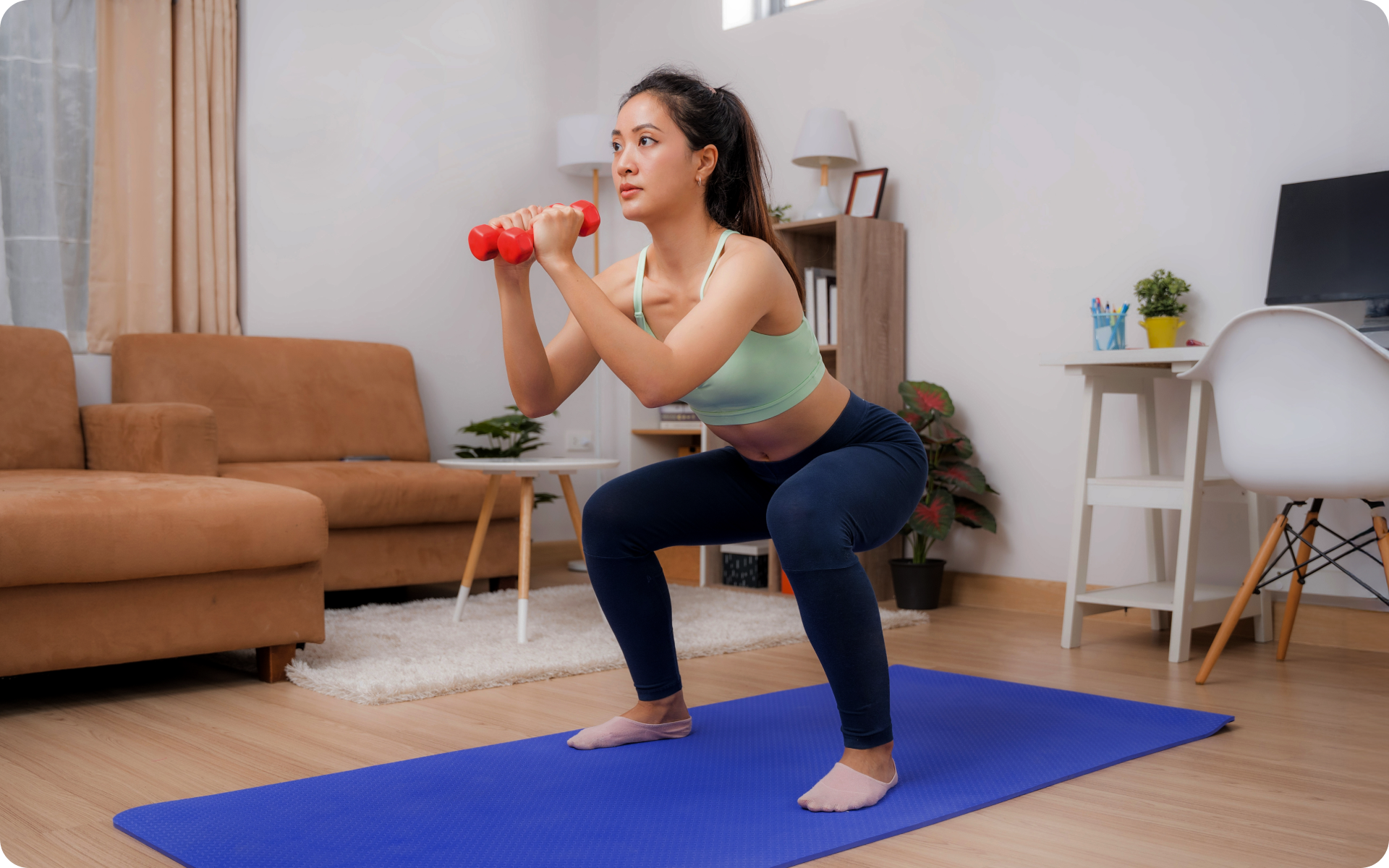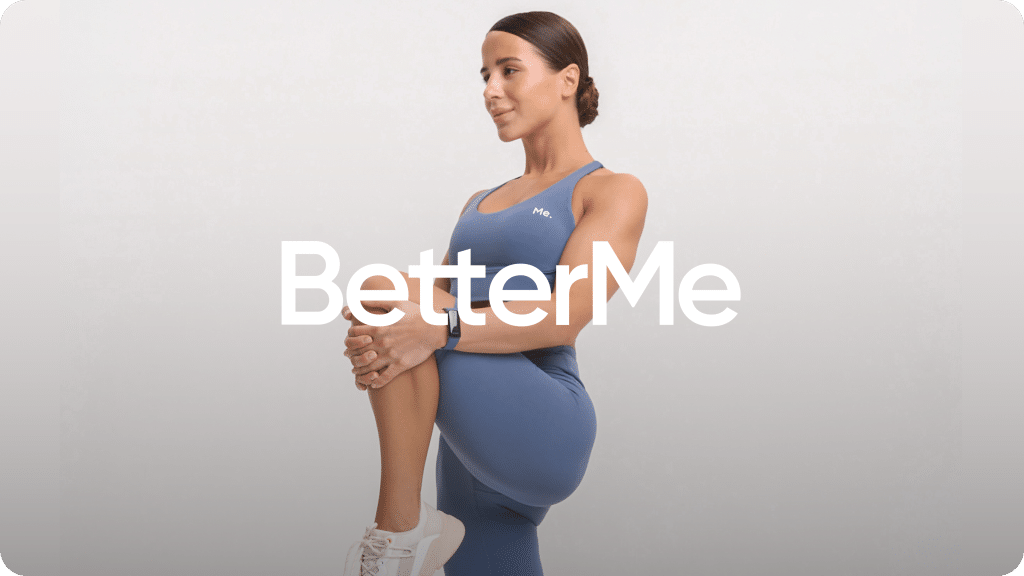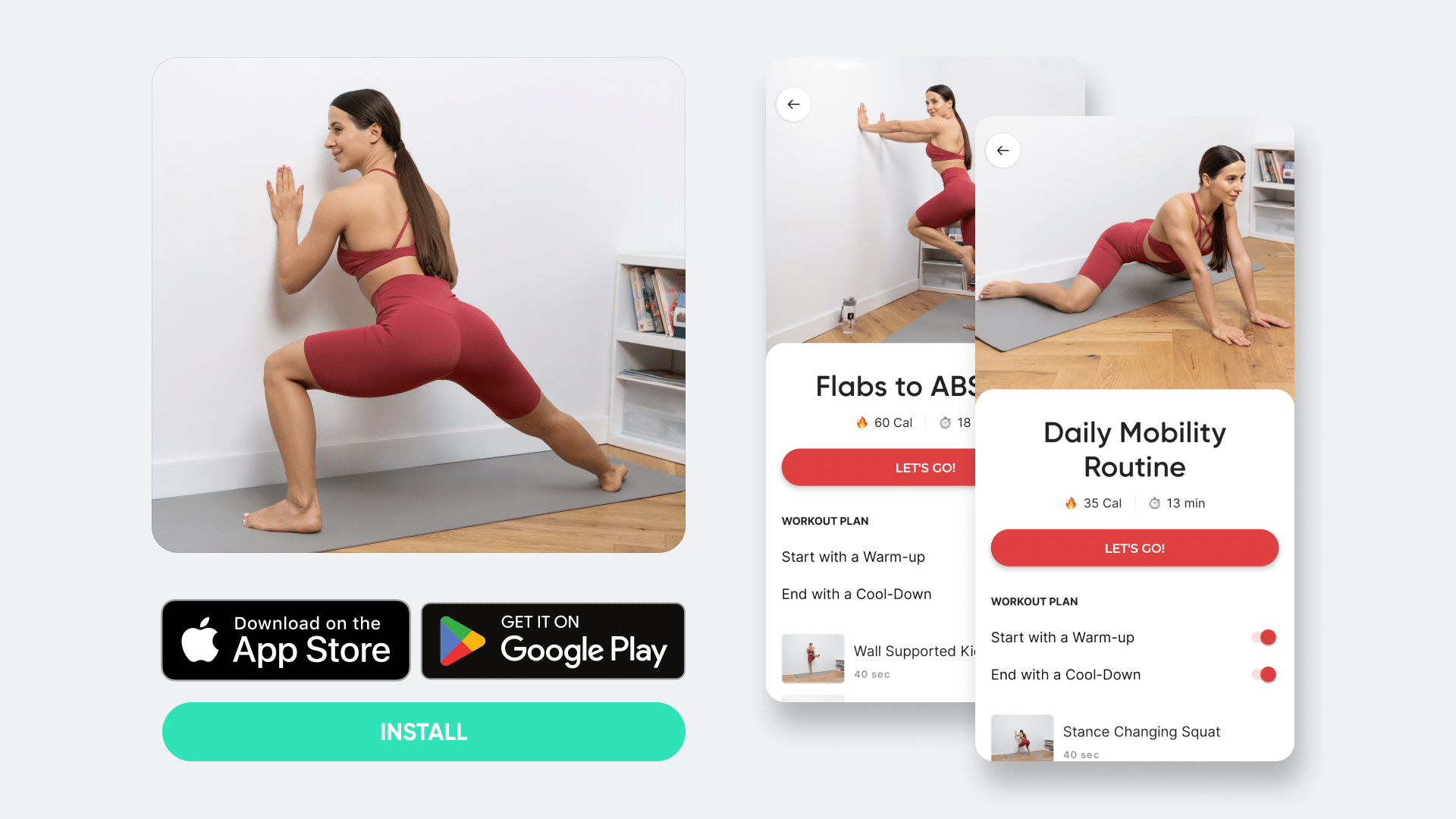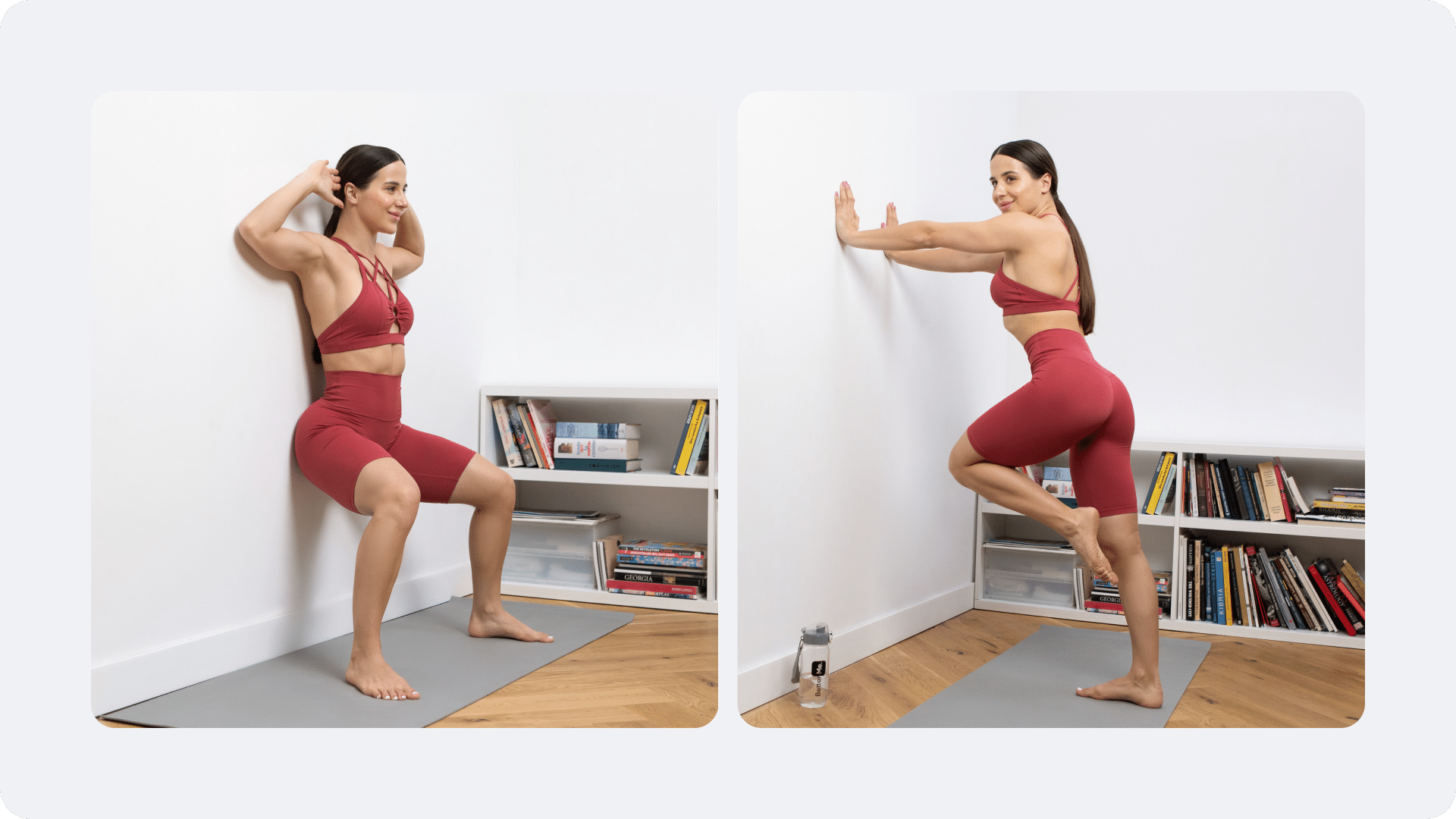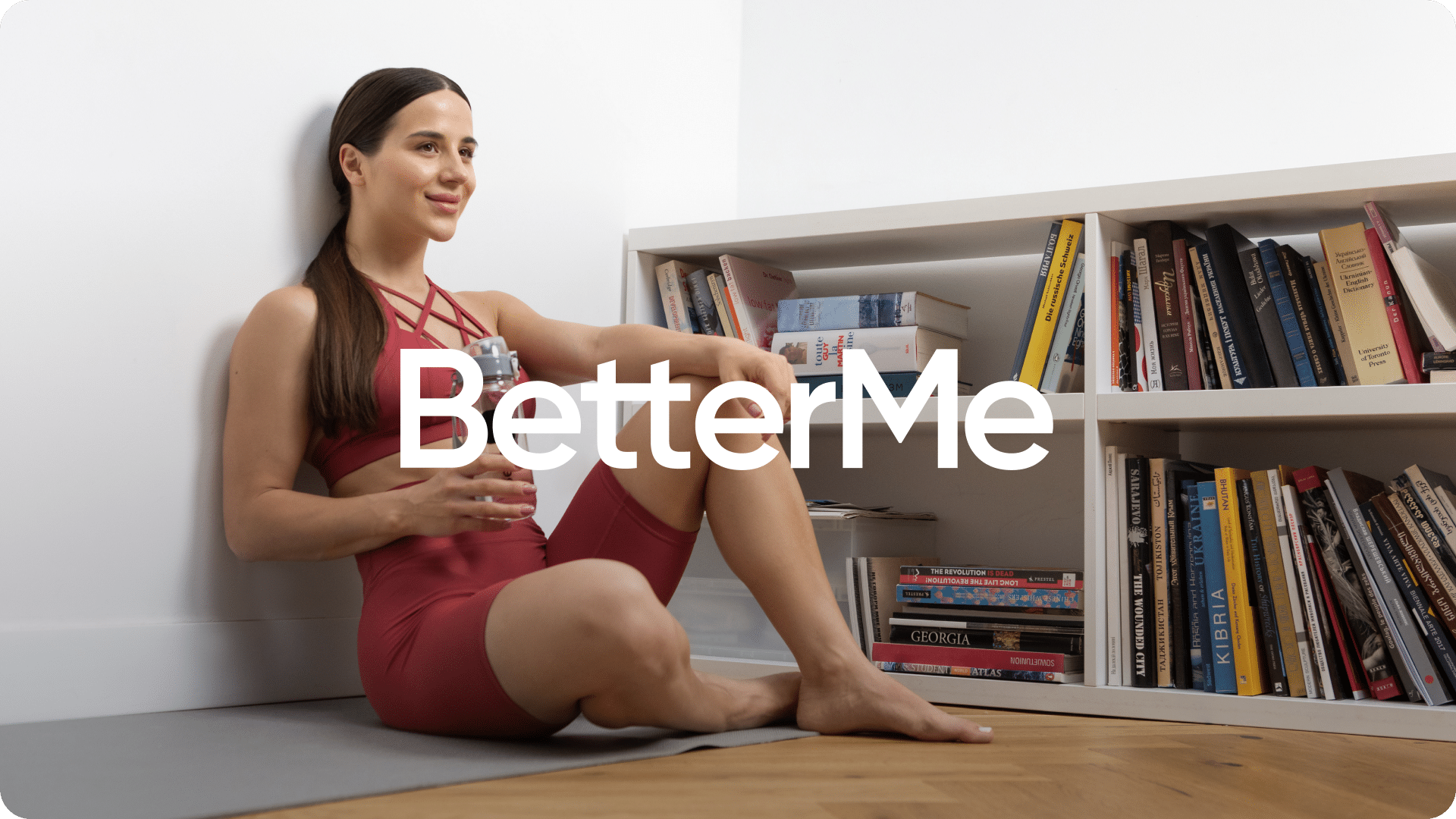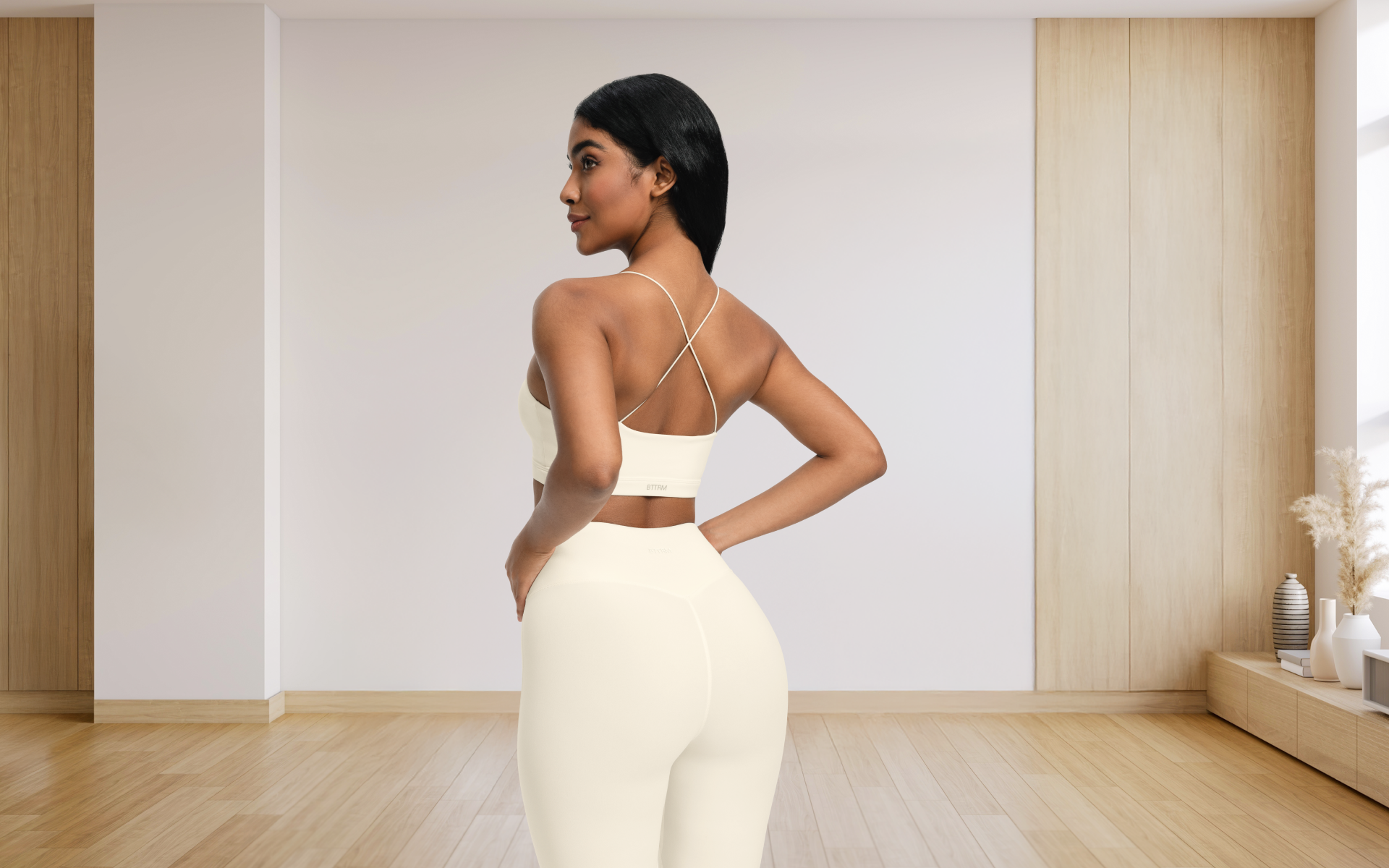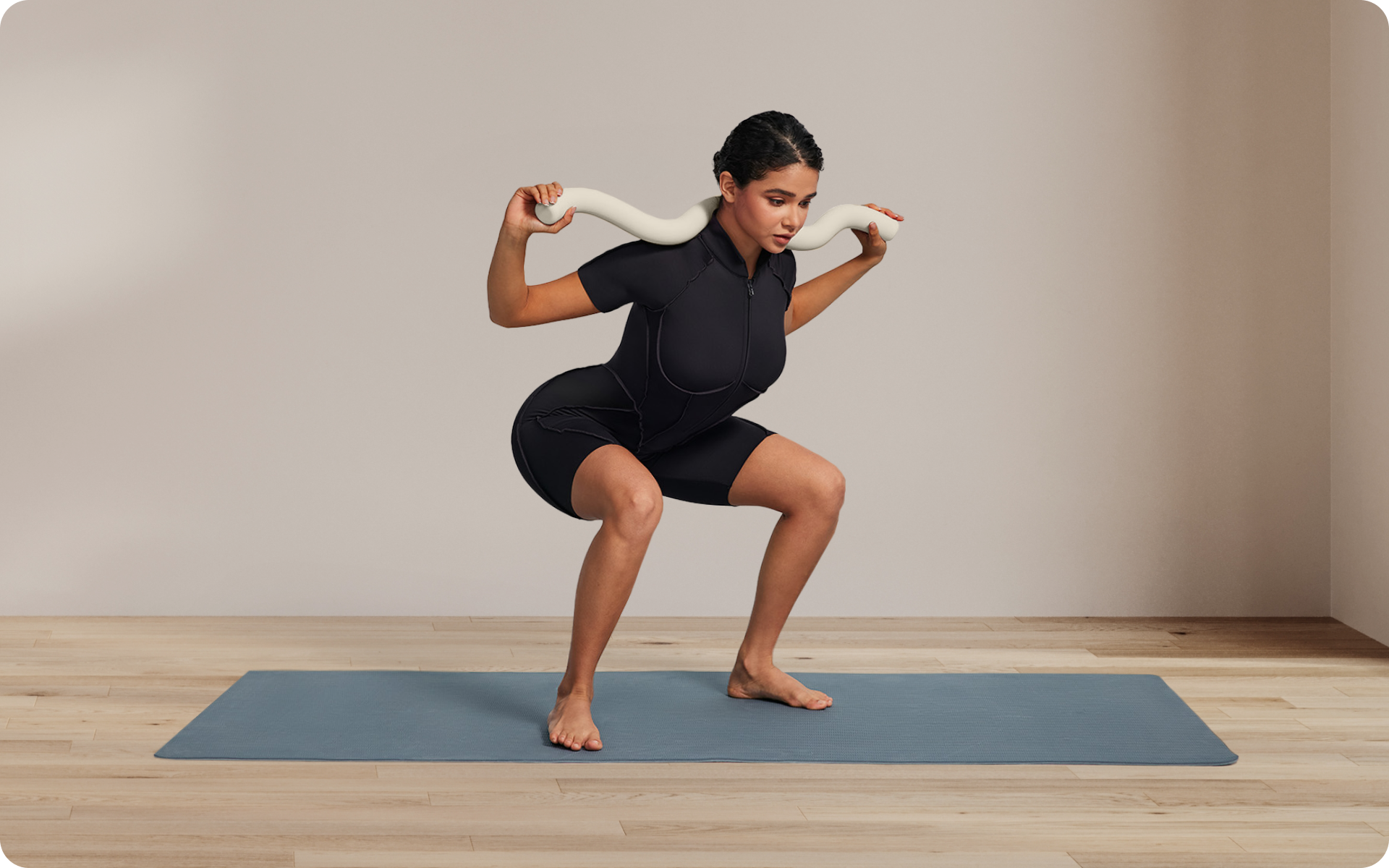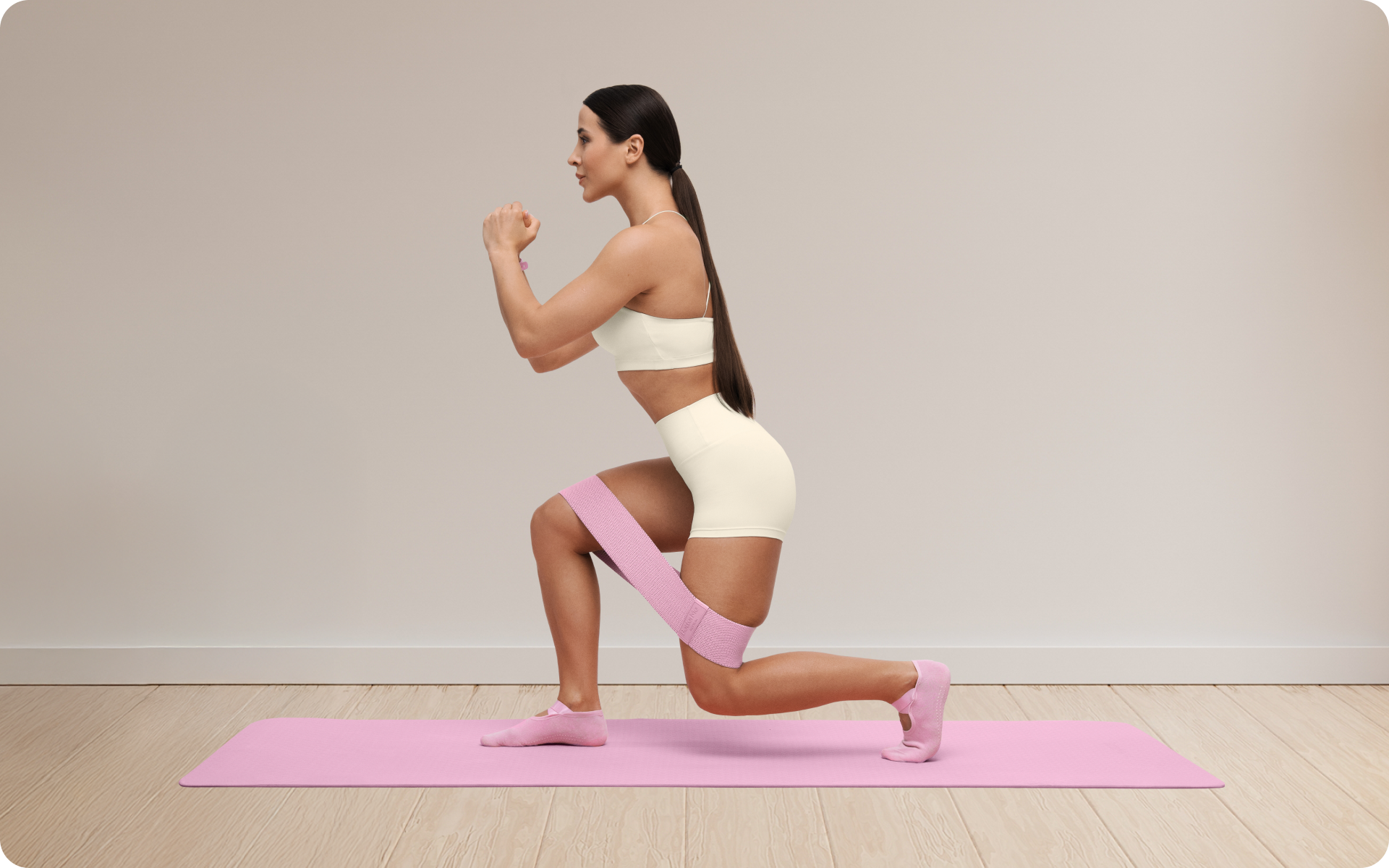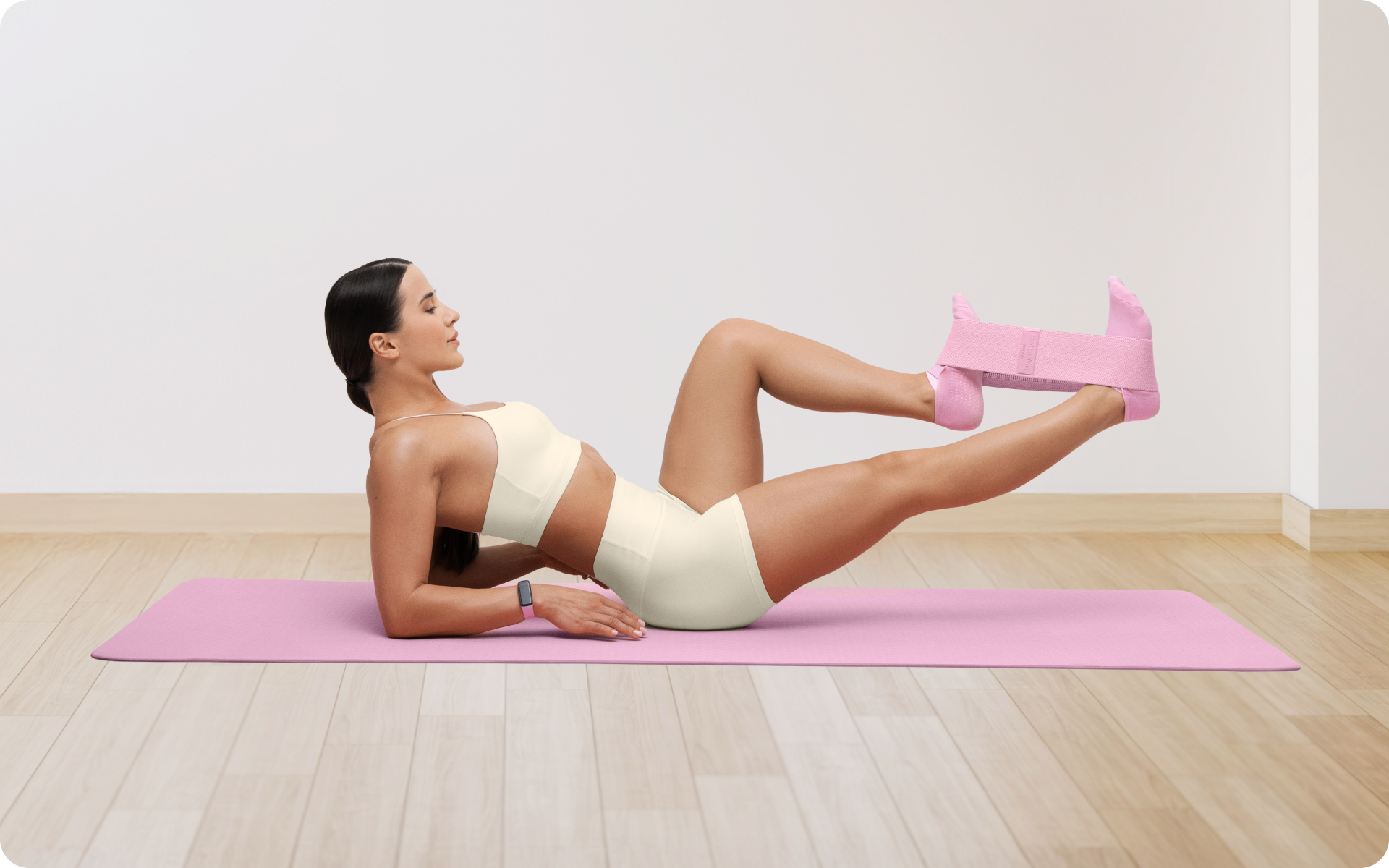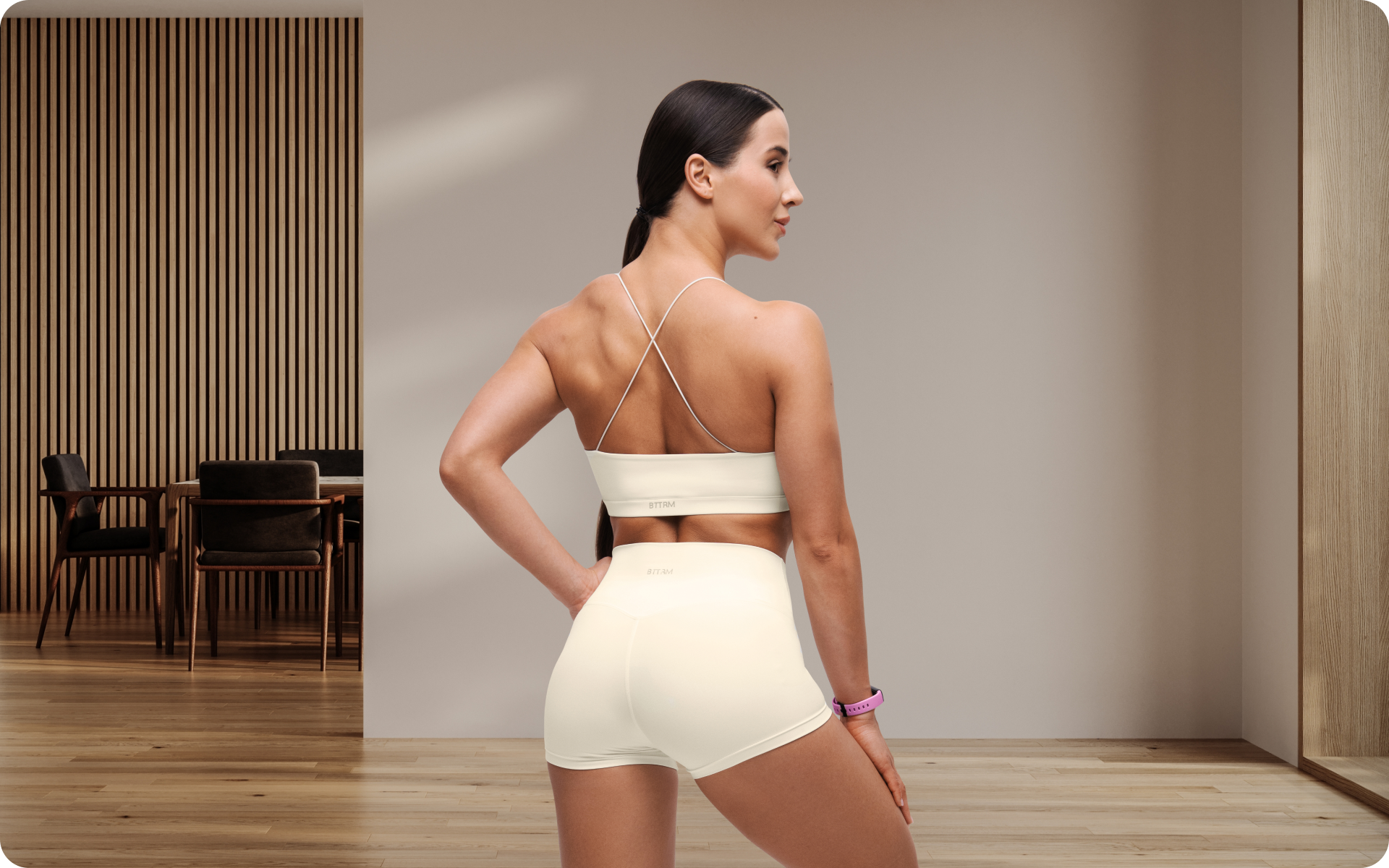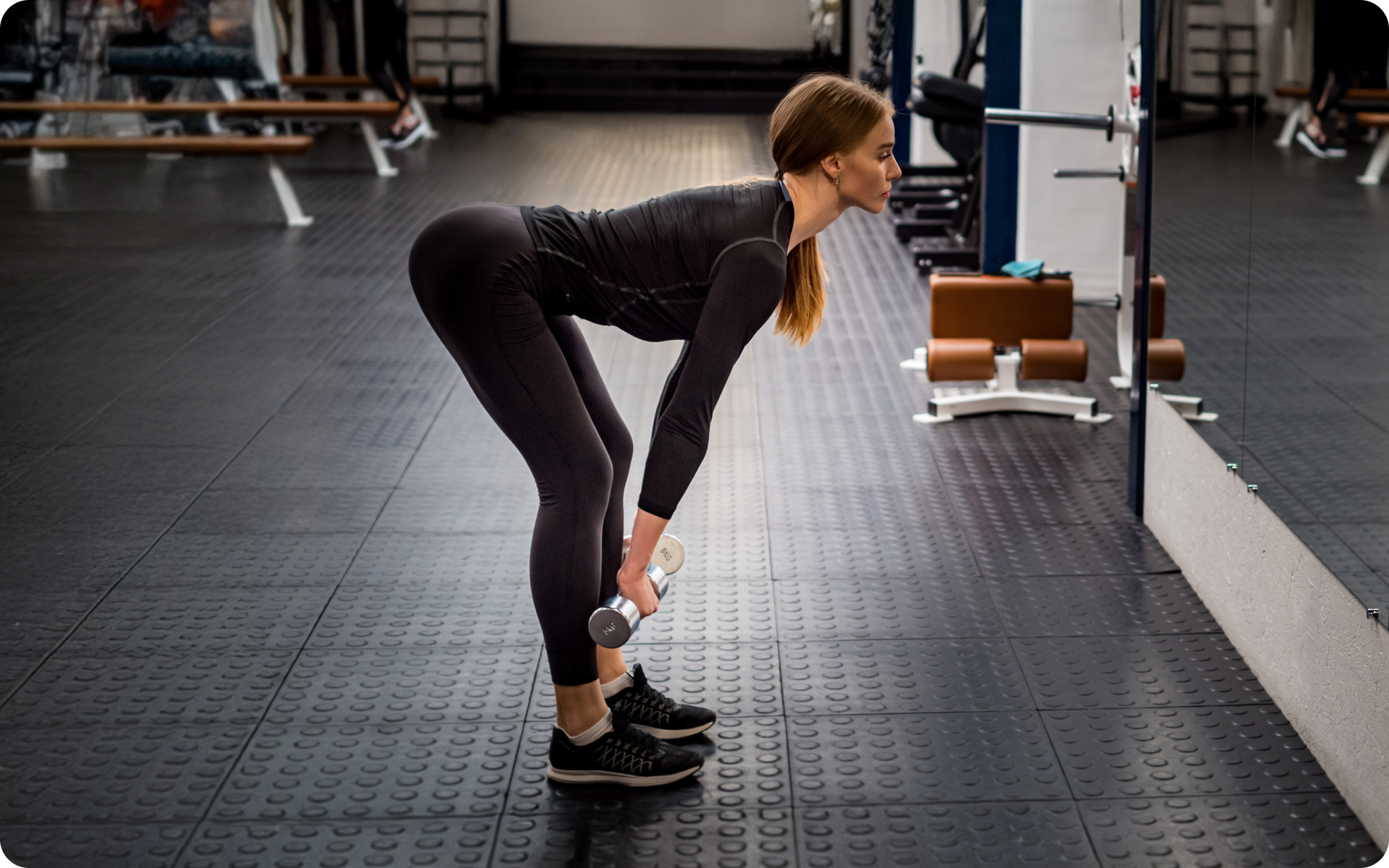Squats are one of the most popular and beneficial exercises for building strength and improving overall fitness. They target multiple muscle groups, including the glutes, quadriceps, hamstrings, and core, making them an efficient way to work out your entire lower body. They also have several benefits for your overall health, such as improving balance and flexibility, preventing injuries, and increasing bone density.
If you’re looking to challenge yourself and take your fitness routine to the next level, one way to do so is by committing to doing 100 squats a day for 30 days. This may seem like a daunting task, but the results can be significant, especially if you are consistent with it. There are also some potential risks and considerations to keep in mind,
Here’s what happens to your body when you do 100 squats a day for 30 days.
What Muscles Do Squats Work?
Squats primarily work the muscles in your lower body, including the glutes, quadriceps, hamstrings, and calves. They also engage your core muscles to stabilize and support your spine during the movement. Minor muscles, such as the adductors and abductors, also come into play to help with balance and stability.
Glutes (Specifically the Gluteus Maximus)
The gluteus maximus, or your butt muscles, is a large muscle and is heavily targeted during squats. It’s responsible for extending your hips, which is an essential part of the squat movement.
The other two glute muscles, the gluteus medius and minimus, also play a role in squats by helping with hip abduction and rotation. Hip abduction is the movement of moving your leg away from your body, which happens when you push your knees out during a squat. Hip rotation is the twisting action of your hips that helps you maintain proper form.
Building strong glutes not only improves your overall lower body strength, but it also has functional benefits such as improved posture and reduced risk of lower back pain (21).
Read on for more workouts for glutes in our Bubble Butt Workout 101 blog.
Quadriceps (Front of Thighs)
The quadriceps, also known as the quads, are the muscles located in the front of your thighs. It’s made up of four muscles: rectus femoris, vastus lateralis, vastus medialis, and vastus intermedius. These muscles work together to extend your knee during a squat. Strengthening your quads can improve your ability to perform daily activities like walking, running, and climbing stairs (23).
Hamstrings (Back of Thighs)
The hamstrings are the muscles located at the back of your thighs. They work with the quadriceps to help you bend and straighten your knees during a squat. Having strong hamstrings not only improves your squat form, but it also helps prevent injuries and improves athletic performance (20).
Calves (Back of Lower Legs)
Squats also engage your calf muscles, specifically the gastrocnemius and soleus. These muscles are responsible for plantar flexion, which is the movement of pointing your toes downward. Strong calves are essential for activities like walking, running, and jumping. They also help support your ankle joint, which is crucial for maintaining balance and stability during squats (25).
Minor Muscles (Adductors, Abductors, Hip Flexors, Erector Spinae)
As mentioned earlier, squats also engage minor muscles such as the adductors and abductors. The adductors are located on the inside of your thighs and help with pulling your legs together, and help stabilize the knee during a squat. The abductors also help stabilize the knee on the opposite side, and are known for being responsible for movements where the leg moves away from your body laterally.
These minor muscles play a crucial role in maintaining proper form and preventing injuries during squats. Daily, they also help with stability and balance during activities like walking and standing (10).
Other minor muscles that are involved in squats include the hip flexors, which help with bending your hips, and the erector spinae, which supports your spine during the movement.
Reasons why BetterMe is a safe bet: a wide range of calorie-blasting workouts, finger-licking recipes, 24/7 support, challenges that’ll keep you on your best game, and that just scratches the surface! Start using our app and watch the magic happen.
The Benefits of Doing 100 Squats a Day for 30 Days
Committing to doing 100 squats a day for 30 days can have significant benefits for your body, both physically and mentally. Here are some of the potential benefits you may experience:
Increased Muscle Strength and Endurance
The most apparent benefit of doing 100 squats a day is that you’ll see significant improvements in your lower body strength and endurance. By working the muscles mentioned above, you’re gradually building their strength and ability to withstand physical stress (22).
Muscle strength translates to improved performance in daily activities, such as lifting objects, climbing stairs, and playing sports. It can also help prevent injuries and improve overall functional fitness (17).
Muscle endurance, on the other hand, refers to your muscles’ ability to perform repetitive movements without getting tired quickly (17). Doing 100 squats a day can increase your muscle endurance, making it easier for you to do daily tasks or participate in physical activities for more extended periods.
A study conducted in 2016 revealed that doing jump squats three times a week for eight weeks can improve several athletic performances, including explosive strength and sprint time (15).
Increased Bone Density
Squats are considered a weight-bearing exercise, meaning they put stress on your bones and stimulate them to grow stronger. By consistently doing 100 squats a day, you’re putting your bones under stress, which can lead to increased bone density over time (6).
Maintaining strong and dense bones is essential for preventing conditions like osteoporosis, which causes weak and brittle bones that are more susceptible to fractures (2).
Improved Flexibility
Squats require a full range of motion at the hips, knees, and ankles, which can help improve your flexibility over time. This is especially beneficial for those with tight hip flexors or hamstrings.
By regularly performing squats, you’re actively stretching and strengthening these muscles, which can lead to improved flexibility and range of motion. This can help prevent injuries and improve your overall physical performance (19).
Better Posture
As mentioned earlier, squats engage the core muscles to support your spine during the movement. By strengthening these muscles, you’re also improving your posture. Good posture not only looks more attractive, but it also has several other benefits, including reducing back pain and improving digestion (12).
Maintaining good posture is crucial for overall health and can have a significant impact on your daily life. A study conducted in 2018 that looked at core muscle activation during back squats proves the above statement. The research found out that the exercises resulted in greater activation of the back support muscles (4). Based on the findings, scientists who conducted the research recommended using back squats to target core muscles.
Read more: How Many Calories Does 100 Squats Burn?
Increased Calorie Burn
Squats may seem like a simple exercise, but they actually engage multiple muscle groups at once. This can lead to a higher calorie burn compared to isolation exercises (19).
By doing 100 squats a day, you’re engaging your glutes, quads, hamstrings, calves, and core muscles, all of which require energy to perform the movement. According to the Harvard Medical School, a 155-pound individual can burn 233 calories in 30 minutes of vigorous weight or strength training exercise such as squats (3).
Over time, this can lead to an increase in muscle mass and a higher metabolism, resulting in more calories burned throughout the day. Having a higher metabolism may also help with weight loss and weight management (14).
Mental Benefits
Aside from the physical benefits, doing 100 squats a day can also have positive effects on your mental well-being. Exercise, in general, has been proven to release endorphins, which are hormones that promote feelings of happiness and reduce stress (8).
Committing to a daily exercise routine like 100 squats can also provide a sense of accomplishment and boost your self-confidence. It can also serve as a form of stress relief and help improve your overall mood (8).
Our, Wall Squats With Ball, article may help those with limited mobility also enjoy the amazing benefits of squats.
What Will Happen If I Do 100 Squats A Day For 30 Days?
Here are some of the 100 squats a day for 30 days results you should expect (5):
- If you have a high body fat percentage, then you may see weight loss This will result in smaller, tighter, and more toned thighs and butt.
- If you are lean and you have little body fat, you will build a shapely butt. This will highly depend on your consistency, diet, intensity, and the routine you are following.
- You will move, bend, turn and sit with ease
- If you are an athlete, your sprint pace will increase slightly
- Adopting an excellent posture will be easy
100 Squats A Day For 30 Days’ Female And Male Tips
Squats are a challenging and practical exercise that tone up your entire body. When done correctly, they offer a lot of benefits. You can add them to your routine by following these simple tips.
1. Start Low
If you are new to this exercise, do not go straight to doing 100 squats on the first day. Start low and eventually increase the number of reps every day.
So, how many squats a day should you take if you are a beginner? Well, start with 30 repetitions on the first day. Do five more reps every day than the previous day.
Once you hit the 100-mark, do not just dwell on that. Do as many as you can.
2. Do Squat Variation
Before moving on to various things, master the basic squat movement. To perform a basic squat:
- Stand with your feet slightly wider than your hip-width.
- Your toes should be turned slightly outwards.
- Tighten your core so that you can stabilize yourself.
- Put your hands together in front of your chest.
- Shift your weight to your heels as you push your hips backwards and lower yourself until your thighs are parallel with the ceiling
- Make sure your knees are in-line with your toes.
- Press your feet into the floor and thrust your hips forward to stand up
- Repeat the above steps up to 100 times
Once you have mastered the above, you can take the following variations:
Jump Squat
This exercise works out your hips, legs, thighs, and glutes. Follow the procedure below to take it.
- Start by doing a basic squat
- When your thighs are parallel to the ceiling, jump up.
- If you are a beginner, start with a low jump. As you get advanced, jump higher.
- As you land, lower back to the squat position.
- Repeat the above steps as many times as you can.
Sumo Squat
This training works on your glutes and inner thighs. Use the steps below to do it:
- Stand with your feet wider than hip-width apart.
- Your toes should be pointing out.
- Keep your weight in the back of your heels and start lowering your hip.
- Bend your knees and go down until your knees reach a 90 degree angle.
- Do as many sumo as you can.
Barbell Or Back Squat
This exercise works on your legs, hips, glutes, as well as upper and lower back. You will need a barbell on a rack to do it. Follow the steps below:
- Place a barbell on a rack just below your shoulders.
- Move under the bar so that it is on top of your back.
- Grip it with your hands.
- Stand and step back to bring the barbell off the rack.
- Make sure your feet are shoulder-width apart.
- Squat down until your hips are just below your knees
- Push the barbell up
- Repeat the steps as many times as you can.
3. Understand That The Challenge Needs More Than Just Squats
If your goal is to lose weight, you will need to watch your diet. As a rule of the thumb, consume plenty of proteins, fruits, vegetables and drink a lot of water.
If you are trying to lose weight, make sure that your daily calorie consumption is less than what you daily energy needs.
Also, do not just dwell on squats. Do other types of exercises including upper body exercises.
For instance, to fully activate your booty and lower body muscles, your routine needs to incorporate other exercises such as:
- Donkey kicks
- Deadlifts
- Hip thrusts
- Lunges
- Lateral leg lifts
4. Do Not Forget To Rest
Rest is an essential thing in your workout routine. Here are some of the advantages you will gain by resting (7):
- Allows time for muscle growth and recovery
- Prevents exercise-induced fatigue
- Reduces injury risks
- Improves your overall performance by increasing or energy and reducing your fatigue
- Promotes healthy sleep
During your rest days, you can incorporate lighter exercises such as running, cardio, bodybuilding, and so forth.
5. Adhere To All The Safety Precautions
While squatting is a generally safe exercise, there are some safety tips you should adhere to when doing squats. They include the following:
- You should only lower yourself when you can comfortably do so: If you feel any discomfort in your legs or hips, stop doing the exercise.
- You must have a solid base: You need to be stable when squatting to avoid falls and putting unnecessary pressure on your knees.
- Only lift the weights you can handle: Lifting heavy weights can strain your back, knees, hips and lead to injuries.
- Adopt a right posture: Do not round your back or shoulders. Focus on keeping your spinal cord straight in a neutral position. Your head should be neutral and not looking down or up.
- Keep your eyes looking forward: Do not look at your feet while performing any squats. Gaze ahead to keep your neck in a neutral spot.
BetterMe app will provide you with a host of fat-frying fitness routines that’ll scare the extra pounds away and turn your body into a masterpiece! Get your life moving in the right direction with BetterMe!
Sample 30-Day Squats Challenge Routine
Here is a sample 30 days’ squats challenge plan you can follow for optimum results. Each day you will do more squats than the previous day. You will also need to rest for one or two days every week.
Week 1
- Day 1 – 30
- Day 2 – 35
- Day 3 – 40
- Day 4 – Rest
- Day 5 – 40
- Day 6 – 45
- Day 7 – 50
Week 2
- Day 8 – Rest
- Day 9 – 50
- Day 10 – 55
- Day 11 – 60
- Day 12 – Rest
- Day 13 – 60
- Day 14 – 65
Week 3
- Day 15 – 70
- Day 16 – Rest
- Day 17 – 75
- Day 18 – 80
- Day 19 – 85
- Day 20 – Rest
- Day 21 – 85
Week 4
- Day 22 – 90
- Day 23 – 95
- Day 24 – Rest
- Day 25 – 95
- Day 26 – 100
- Day 27 – 100
- Day 28 – Rest
Week 5
- Day 29 – 100
- Day 30 – 100
Doing 100 squats a day for 30 days will effectively help you build your lower body and leg muscles. It is essential to do the exercise correctly. When done incorrectly, they can lead to injury and strain.
Read more: A Simple Guide To Doing Wall Squats With Ball
FAQs
Can I Lose Weight By Doing 100 Squats a Day?
You can potentially lose weight by doing 100 squats a day if it is part of an overall healthy lifestyle that includes proper nutrition and regular exercise. Squats alone may not result in significant weight loss, but they can help build muscle mass, which can increase metabolism and aid in weight management (14).
To increase the calorie burn from squats, you can also incorporate variations like jump squats or add weights for added resistance. A high-intensity squat workout can also help burn more calories and potentially lead to weight loss (19).
Does 100 Squats a Day Make Your Bum Bigger?
Squats primarily target the gluteal muscles, so doing 100 squats a day can potentially lead to a bigger and more toned butt. However, the exact results will vary depending on factors like genetics, diet, and overall fitness level.
Progressive overload is also essential when it comes to building muscle, so you may need to increase the number of squats or add resistance over time to continue seeing growth in your glutes (18).
To specifically target your glutes during squats, you can also try different variations like sumo squats or single-leg squats.
We’ve discussed this further in our Butt Lift Workout Guide article.
Do Squats Reduce Belly Fat?
Squats reduce belly fat indirectly by increasing overall muscle mass, which can lead to a higher metabolism and potentially aid in weight loss (14). However, spot reduction is not possible with any exercise, including squats. So as you lose weight overall, you may notice a reduction in your belly fat as well.
In addition to squats, incorporating a healthy diet and regular cardiovascular exercise can also help reduce belly fat (24).
Why Is My Bum Getting Flatter With Exercise?
Rapid fat loss or excessive cardio can potentially lead to muscle loss, including in the glutes (1). This is more likely if your diet is not providing enough protein to support muscle growth and repair.
To maintain or build your glute muscles, it’s essential to include a variety of exercises that target them, including squats. Additionally, make sure you’re consuming enough protein in your diet to support muscle maintenance and growth (5).
Consider the role of genetics in determining where your body stores fat and builds muscle. You may naturally have a flatter butt due to your body’s specific composition.
Will 500 Squats a Day Do Anything?
500 squats a day may lead to significant muscle fatigue and potential injury if you’re not used to that level of physical activity. It’s always important to listen to your body and gradually increase the intensity and volume of your workouts.
Doing 500 squats a day is also not necessary for reaping the benefits of this exercise. As discussed, even 100 squats a day can have many positive effects on your physical and mental well-being (8).
Remember to always prioritize proper form and listen to your body’s limitations when it comes to any exercise routine. It’s also important to consult with a healthcare professional before starting any new exercise program, especially if you have any underlying health conditions. Don’t forget that doing other exercises including upper body exercises is also important.
The Bottom Line
Doing 100 squats a day for 30 days can have numerous benefits, including improved strength, flexibility, posture, and mental well-being. However, it’s essential to listen to your body and gradually increase the intensity and volume of your workouts.
Additionally, incorporating a healthy diet and other forms of exercise will further enhance these benefits. A high-intensity squat workout can also be a great addition to any fitness routine and will help burn more calories and potentially lead to weight loss.
DISCLAIMER:
This article is intended for general informational purposes only and does not serve to address individual circumstances. It is not a substitute for professional advice or help and should not be relied on for making any kind of decision-making. Any action taken as a direct or indirect result of the information in this article is entirely at your own risk and is your sole responsibility.
BetterMe, its content staff, and its medical advisors accept no responsibility for inaccuracies, errors, misstatements, inconsistencies, or omissions and specifically disclaim any liability, loss or risk, personal, professional or otherwise, which may be incurred as a consequence, directly or indirectly, of the use and/or application of any content.
You should always seek the advice of your physician or other qualified health provider with any questions you may have regarding a medical condition or your specific situation. Never disregard professional medical advice or delay seeking it because of BetterMe content. If you suspect or think you may have a medical emergency, call your doctor.
SOURCES:
- 5 alarming dangers of extreme weight-loss you can’t afford to ignore (n,d,activesgcircle.gov.sg)
- Bone health: Tips to keep your bones healthy (2022,mayoclinic.org)
- Calories burned in 30 minutes for people of three different weights (2018, health.harvard.edu)
- Comparison of Core Muscle Activation between a Prone Bridge and 6-RM Back Squats (2018, ncbi.nlm.nih.gov)
- Dietary Protein and Muscle Mass: Translating Science to Application and Health Benefit (2019,nih.gov)
- Effects of Body Mass-Based Squat Training in Adolescent Boys (2013,nih.gov)
- Effects of Consecutive Versus Non-consecutive Days of Resistance Training on Strength, Body Composition, and Red Blood Cells (2018,nih.gov)
- Exercise for Mental Health (2006,nih.gov)
- Effects of repeated bouts of squatting exercise on sub-maximal endurance running performance (2013, pubmed.ncbi.nlm.nih.gov)
- Effects of strengthening the hip flexor muscles on walking ability and the locomotive syndrome rank test: An intervention study (2020,nih.gov)
- Functional fitness training: Is it right for you? (2019, mayoclinic.org)
- Getting It Straight (2017,nih.gov)
- How to Do a Bodyweight Squat (nd, nytimes.com)
- Increasing muscle mass to improve metabolism (2013,nih.gov)
- Improved Maximum Strength, Vertical Jump and Sprint Performance after 8 Weeks of Jump Squat Training with Individualized Loads (2016, ncbi.nlm.nih.gov)
- Lift your way to strength – and help your body stay young (2018, theguardian.com)
- Muscular Strength and Endurance (2016,healthlinkbc.ca)
- Progression of volume load and muscular adaptation during resistance exercise (2014,nih.gov)
- Reasons why you should start doing Squats (2022,nnc.gov.ph)
- STRENGTHENING HAMSTRING MUSCLES: BENEFITS AND EXERCISES (n,d,ace-pt.org)
- The effects of gluteus muscle strengthening exercise and lumbar stabilization exercise on lumbar muscle strength and balance in chronic low back pain patients (2015,nih.gov)
- The mechanisms of muscle hypertrophy and their application to resistance training (2010,nih.gov)
- Quadriceps strengthening exercises are effective in improving pain, function and quality of life in patients with osteoarthritis of the knee (2012,nih.gov)
- Weight-Loss and Maintenance Strategies (2003,nih.gov)
- WHY STRONG CALVES ARE IMPORTANT (2023,alignbodyclinic.co.uk)
